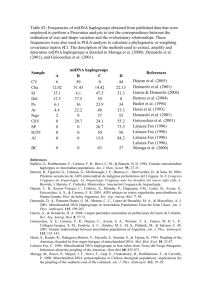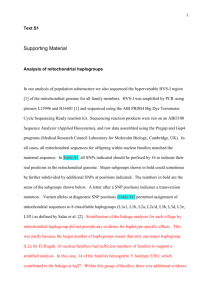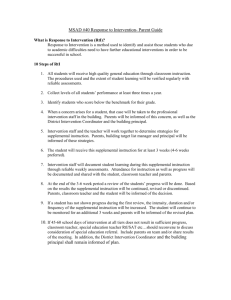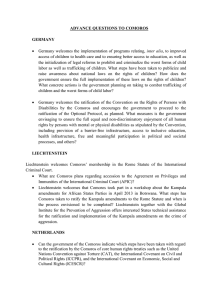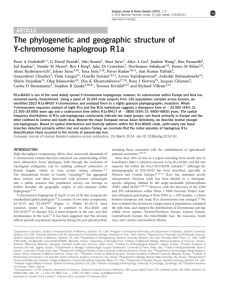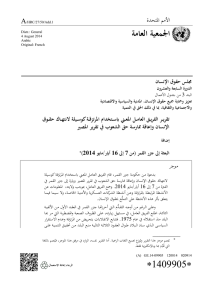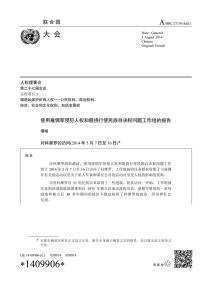Genetic evidence for ancient seafaring as a major
advertisement
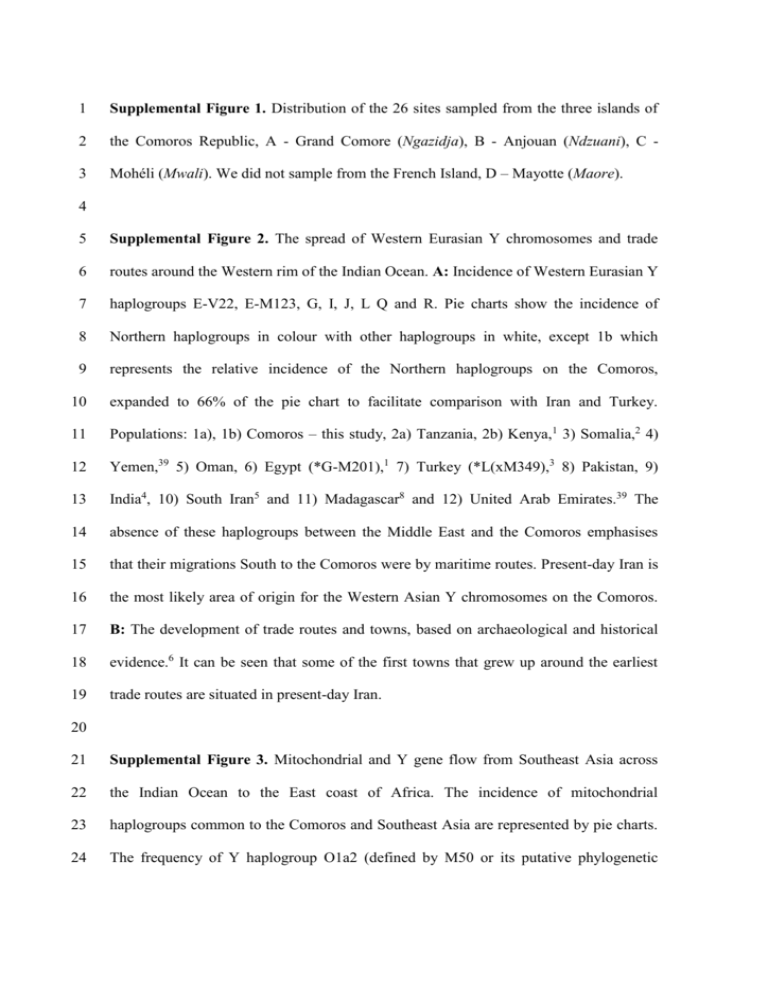
1 Supplemental Figure 1. Distribution of the 26 sites sampled from the three islands of 2 the Comoros Republic, A - Grand Comore (Ngazidja), B - Anjouan (Ndzuani), C - 3 Mohéli (Mwali). We did not sample from the French Island, D – Mayotte (Maore). 4 5 Supplemental Figure 2. The spread of Western Eurasian Y chromosomes and trade 6 routes around the Western rim of the Indian Ocean. A: Incidence of Western Eurasian Y 7 haplogroups E-V22, E-M123, G, I, J, L Q and R. Pie charts show the incidence of 8 Northern haplogroups in colour with other haplogroups in white, except 1b which 9 represents the relative incidence of the Northern haplogroups on the Comoros, 10 expanded to 66% of the pie chart to facilitate comparison with Iran and Turkey. 11 Populations: 1a), 1b) Comoros – this study, 2a) Tanzania, 2b) Kenya,1 3) Somalia,2 4) 12 Yemen,39 5) Oman, 6) Egypt (*G-M201),1 7) Turkey (*L(xM349),3 8) Pakistan, 9) 13 India4, 10) South Iran5 and 11) Madagascar8 and 12) United Arab Emirates.39 The 14 absence of these haplogroups between the Middle East and the Comoros emphasises 15 that their migrations South to the Comoros were by maritime routes. Present-day Iran is 16 the most likely area of origin for the Western Asian Y chromosomes on the Comoros. 17 B: The development of trade routes and towns, based on archaeological and historical 18 evidence.6 It can be seen that some of the first towns that grew up around the earliest 19 trade routes are situated in present-day Iran. 20 21 Supplemental Figure 3. Mitochondrial and Y gene flow from Southeast Asia across 22 the Indian Ocean to the East coast of Africa. The incidence of mitochondrial 23 haplogroups common to the Comoros and Southeast Asia are represented by pie charts. 24 The frequency of Y haplogroup O1a2 (defined by M50 or its putative phylogenetic 25 equivalent M110) is shown boxed. Populations shown are 1) Comoros –this study, 2) 26 Madagascar,7,8 and 3) Sumatra, 4) Borneo, 5) Sulawesi, 6) Malaysia, 7) Philippines, 8) 27 Taiwan.7,9-11 28 29 References for supplemental Figure legends. 30 1 Luis JR, Rowold DJ, Regueiro M et al: The Levant versus the Horn of Africa: 31 Evidence for Bidirectional Corridors of Human Migrations. Am. J. Hum. Genet. 32 2004; 74: 532–544. 33 2 Sanchez JJ, Hallenberg C, Borsting C, Hernandez A, Morling N: High frequencies 34 of Y chromosome lineages characterized by E3b1, DYS19-11, DYS392-12 in 35 Somali males. Eur J Hum Genet 2005; 13: 856-866. 36 3 37 38 Cinnioglu C, King R, Kivisild T et al: Excavating Y-chromosome haplotype strata in Anatolia. Hum Genet 2004; 114: 127-148. 4 Sengupta S, Zhivotovsky LA, King R et al: Polarity and temporality of high- 39 resolution Y-chromosome distributions in India identify both indigenous and 40 exogenous expansions and reveal minor genetic influence of Central Asian 41 pastoralists. Am J Hum Genet 2006; 78: 202-221. 42 5 Regueiro M, Cadenas AM, Gayden T, Underhill PA, Herrera RJ: Iran: 43 tricontinental nexus for Y-chromosome driven migration. Hum Hered 2006; 61: 44 132-143. 45 46 6 Beaujard P: The Indian Ocean in Eurasian and African World-Systems Before the Sixteenth Century. J World Hist 2005; 16: 411-465. 47 7 Hurles ME, Sykes BC, Jobling MA, Forster P: The dual origin of the malagasy in 48 island southeast Asia and East Africa: evidence from maternal and paternal 49 lineages. Am J Hum Genet 2005; 76: 894-901. 50 8 Tofanelli S, Bertoncini S, Castri L et al: On the origins and admixture of Malagasy: 51 new evidence from high resolution analyses of paternal and maternal lineages. Mol 52 Biol Evol 2009. 53 54 55 9 Hill C, Soares P, Mormina M et al: A mitochondrial stratigraphy for island southeast Asia. Am J Hum Genet 2007; 80: 29-43. 10 Kayser M, Choi Y, van Oven M et al: The impact of the Austronesian expansion: 56 evidence from mtDNA and Y chromosome diversity in the Admiralty Islands of 57 Melanesia. Mol Biol Evol 2008; 25: 1362-1374. 58 11 Li H, Wen B, Chen SJ et al: Paternal genetic affinity between Western 59 Austronesians and Daic populations. BMC Evol Biol 2008; 8: 146. 60 61 Supplemental Table 1. Y chromosome SNP markers. 62 Supplemental Table 2. Y chromosome haplogroups and STR haplotypes. 63 Supplemental Table 3. Mitochondrial SNP markers. 64 Supplemental Table 4. Mitochondrial haplogroups and HVS-I sequence. 65 66



